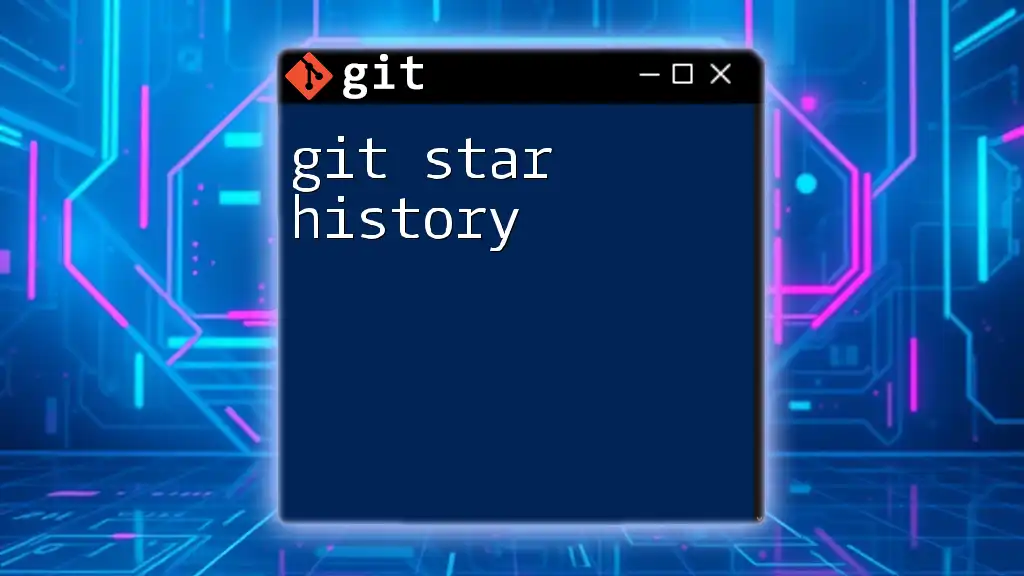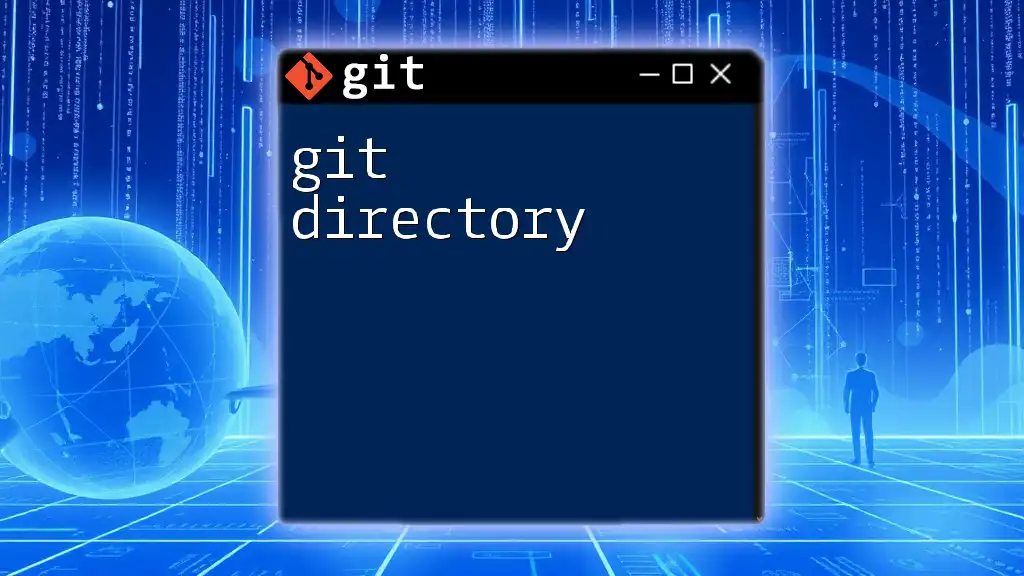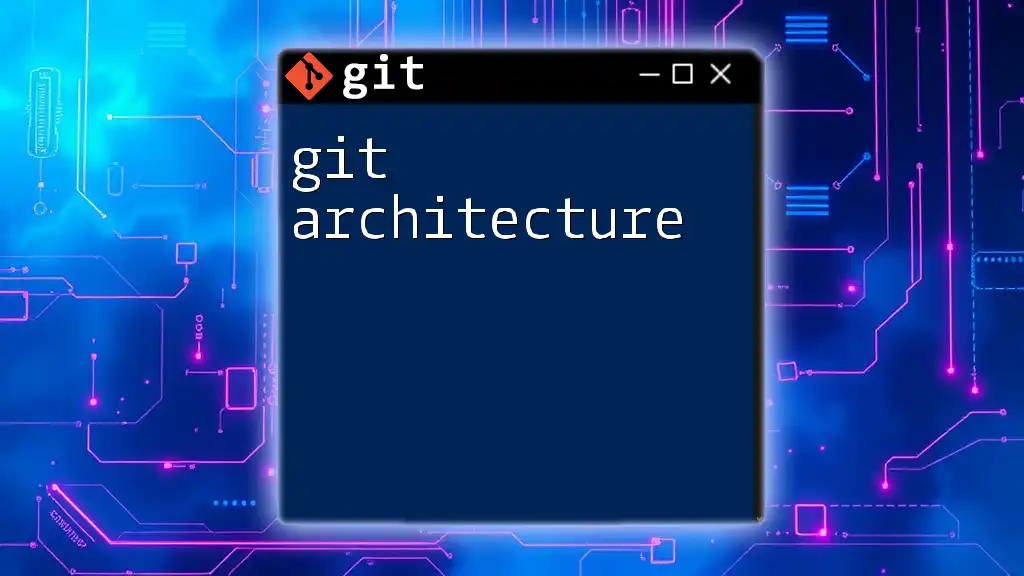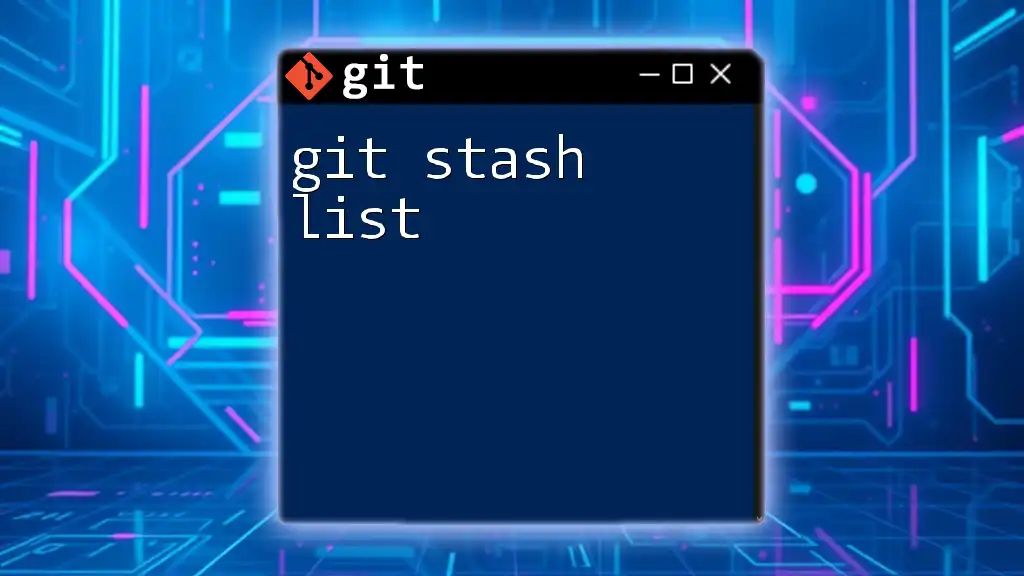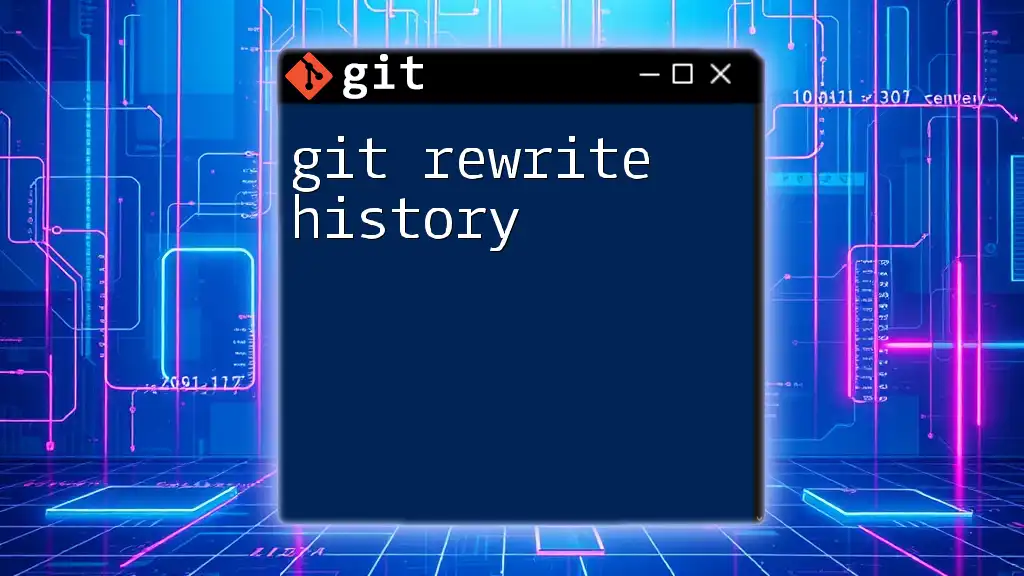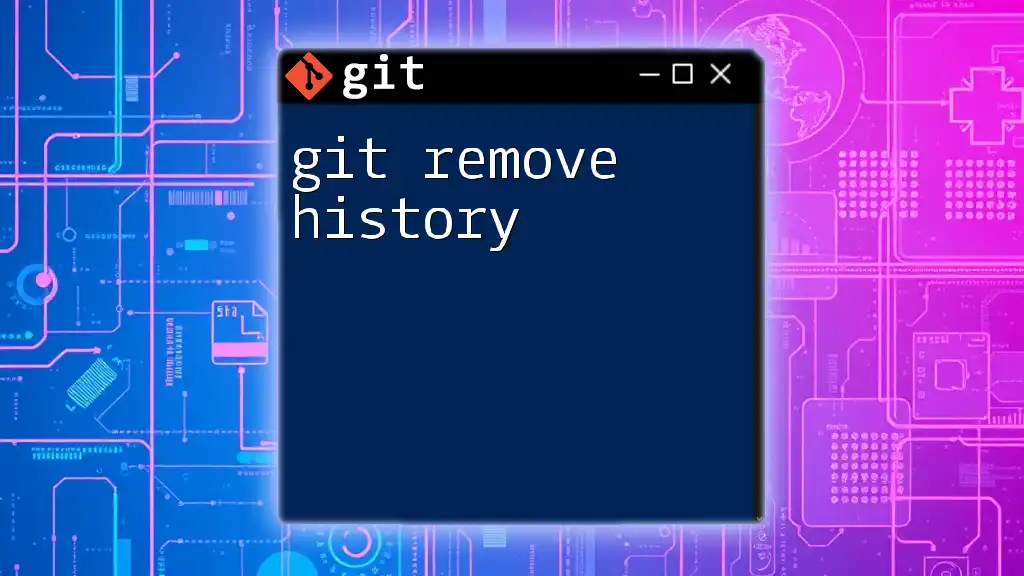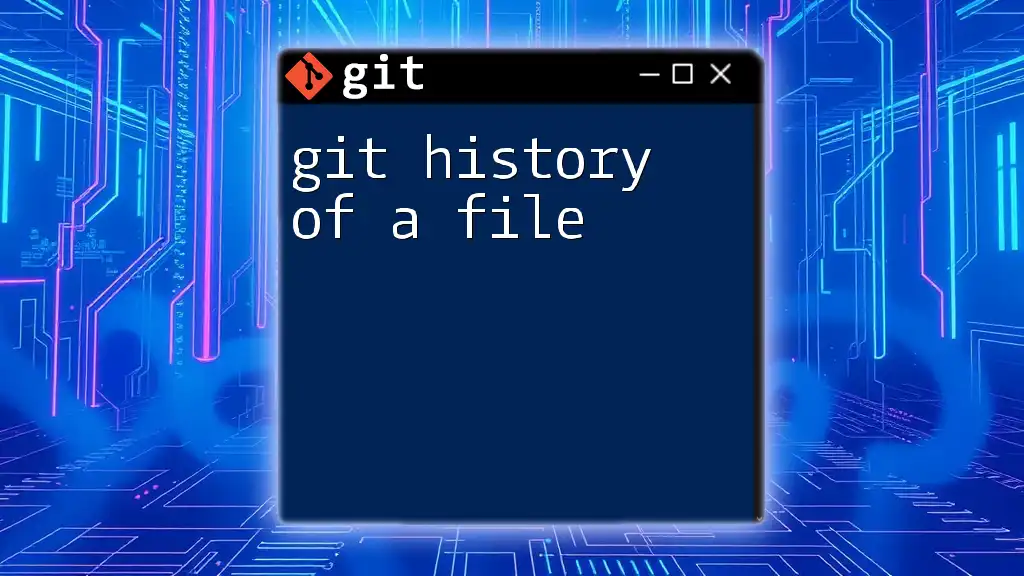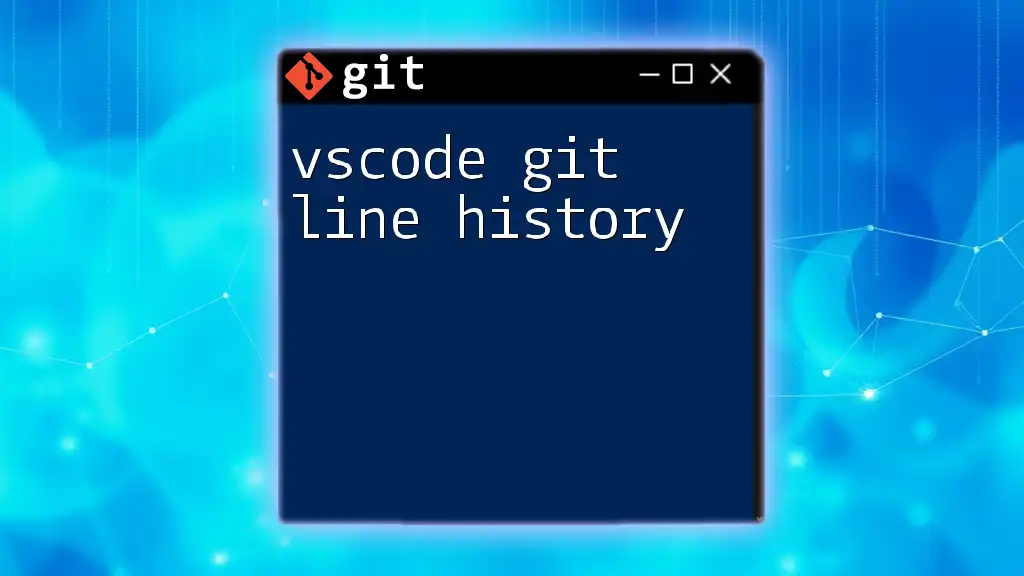The `git star history` command does not exist, but if you meant to explore the history of starred repositories in GitHub, you can use the following command to check the history of commits in your localized Git repository.
git log --oneline --decorate --graph
What is Git Stash?
Git Stash is a powerful feature within Git that allows developers to temporarily shelve or store changes that are not yet ready to be committed. This is particularly useful when you’re in the middle of working on a feature but need to switch contexts, perhaps to fix a bug or pull in the latest changes from the main development branch. Stashing gives you the ability to save your work in progress without committing incomplete changes to the repository.
Using Git Stash effectively provides several benefits, such as:
- Avoiding incomplete commits: You can return to your work later without cluttering the commit history.
- Streamlined workflows: Quickly switch between tasks without losing your progress.
- Better version control: Manage complex changes across multiple branches without losing track of your edits.

Understanding Stash Commands
Basic Stash Commands
To begin utilizing Git Stash, it's essential to know the basic commands that allow you to manage your stashes effectively:
-
`git stash`: This command stashes your changes, saving your modified tracked files and the changes in the working directory to a hidden stash, essentially creating a checkpoint.
git stash -
`git stash list`: This command displays a list of all stashed changes. Each stash in the list is given a name based on the branch name and the timestamp of when it was stashed.
git stash list -
`git stash show`: This command provides a summary of the changes stored in the most recent stash.
Advanced Stash Commands
Once you're familiar with the basic commands, you can leverage advanced features for more control:
-
`git stash apply` vs. `git stash pop`:
-
`git stash apply` applies the changes from the stash without removing them from the stash list, allowing you to use them later if necessary.
git stash apply -
`git stash pop` applies the changes and then removes the stash from the list. Use this when you are sure you no longer need the stashed changes. This is useful when completing the task tied to the stashed changes.
git stash pop
-
-
`git stash drop`: To delete a specific stash from the stash list, you can use this command along with the stash identifier (e.g., `stash@{0}`).
git stash drop stash@{0} -
`git stash clear`: This command removes all stashes from your stash list. It's a quick way to clear out unused stashes but should be used cautiously.
git stash clear

Visualizing Stash History
Using `git stash list`
When you execute `git stash list`, Git returns a list formatted as follows:
stash@{0}: WIP on main: 1234567 commit message
stash@{1}: WIP on feature: 89abcde commit message
Each entry includes:
- Stash identifier (`stash@{N}`): A unique reference number for each stash.
- WIP on branch name: Indicates the branch where the stash was created.
- Short commit hash: Provides context by showing the last commit associated with the stashed changes.
- Commit message: An optional description or message about what changes were stashed.
Understanding this format helps identify specific stashes, making it easier to work with multiple stashes.
Accessing Detailed Stash Information
If you need to see more details about a specific stash, you can use:
git stash show -p stash@{0}
This command provides a diff view of what was stashed, allowing you to understand precisely which changes are included.
Additionally, if you want to view the stashed changes in the context of another branch, you can switch to that branch and run `git stash apply`. This capability is particularly helpful when you’re working on a feature and realize that your changes need to be incorporated into another branch entirely.
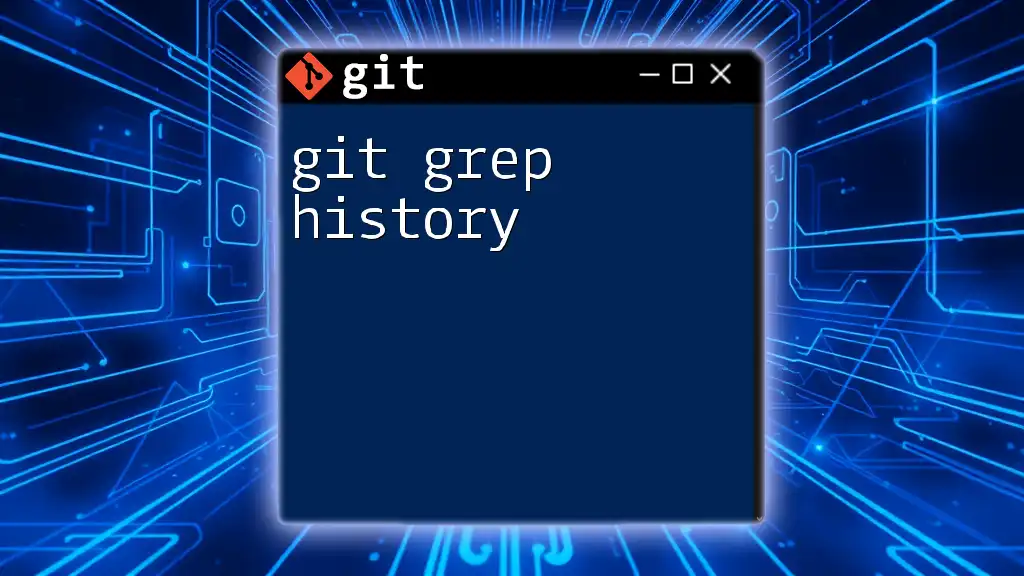
Best Practices for Using Git Stash
When to Use Stash
Knowing when to stash is crucial for a smooth workflow. Here are some scenarios where it is especially advantageous:
- Switching between branches without losing progress.
- Temporarily setting aside work when an urgent task arises.
- Experimenting with new ideas that may not be ready for a commit.
On the other hand, be cautious not to use stashing as a crutch. It should complement your usual workflow rather than replace clear versioning practices.
Managing Stashes Effectively
To maintain a clean and manageable stash, consider the following:
-
Keep a tidy stash list: Regularly check your stashes and remove those you no longer need using `git stash drop` or `git stash clear`.
-
Naming stashes for clarity: Adding a descriptive message when stashing helps clarify the purpose of each stash, making it easier to recall specifics later. Use:
git stash save "Working on feature X, needs review"
This practice keeps your stash organized and meaningful.
Integrating Stash with Branch Management
Stashing can be seamlessly integrated into your branch management. Suppose you are on a feature branch and receive a notification about a critical bug in the main branch. You can quickly stash your changes:
git stash
Then, switch to the main branch, fix the bug, and commit the changes. Afterward, return to your feature branch and apply your stashed work:
git checkout feature-branch
git stash pop
This workflow enhances productivity and allows you to manage tasks without losing valuable work.
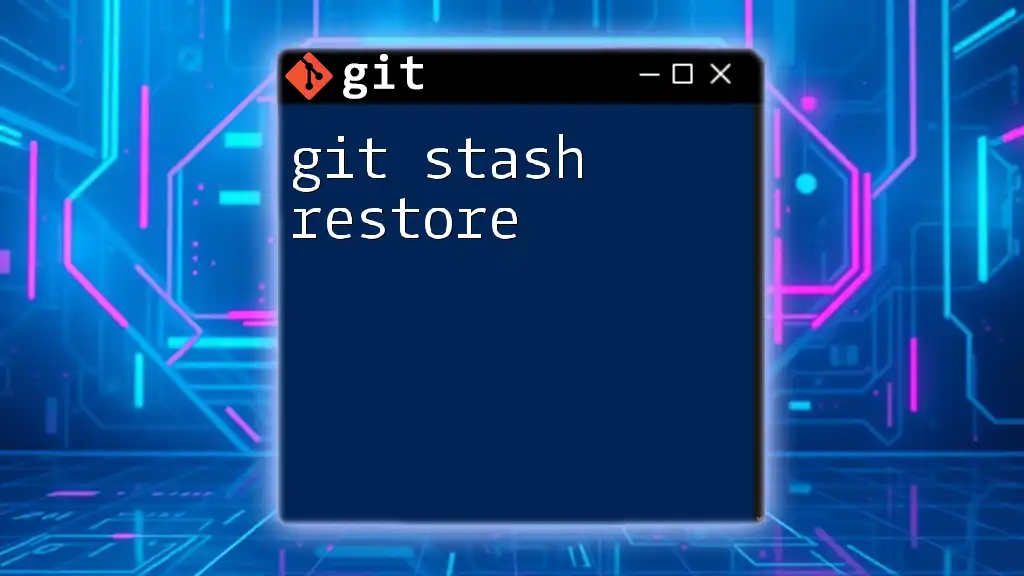
Conclusion
Utilizing Git Stash is a key skill for developers looking to streamline their workflow and maintain effective version control. By mastering stash commands and understanding best practices, you can manage your changes more fluidly, switching contexts while preserving the integrity of your codebase. Embracing these strategies not only improves your efficiency but also promotes a cleaner and more maintainable project history.
Explore further to solidify your understanding of Git through practice and additional resources, and you’ll soon find that stashing becomes an indispensable tool in your development toolkit.
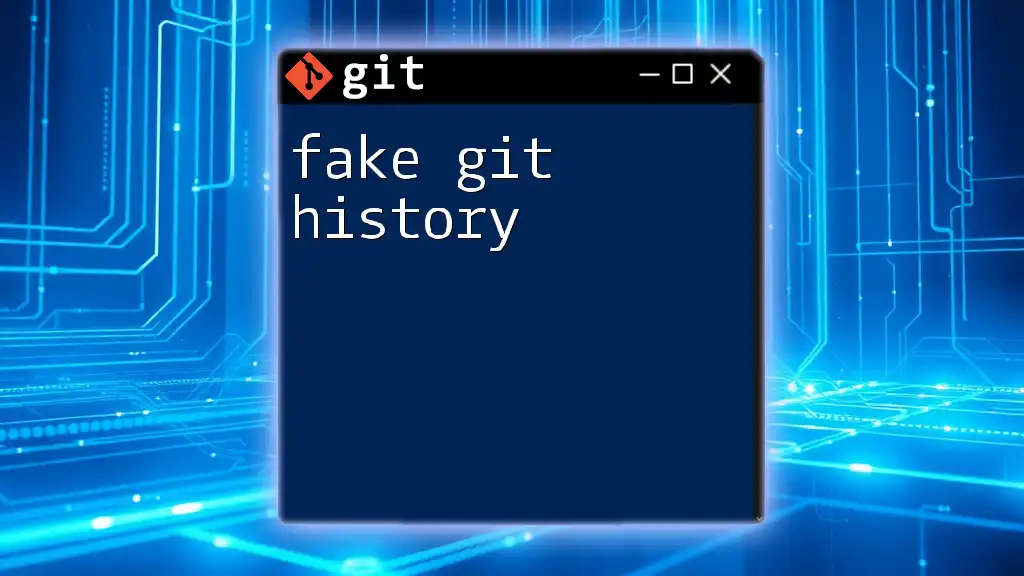
Additional Resources
For more thorough knowledge, refer to [the official Git documentation](https://git-scm.com/doc). Additionally, you may explore advanced Git techniques in recommended literature and look into Git GUI tools that provide intuitive ways to visualize your stash history.

FAQs
What happens if I forget to apply or drop my stashes?
If you neglect to apply or drop your stashes, they will remain in your stash list. Over time, this can lead to a cluttered list, making it difficult to find the relevant stashes. Regularly managing your stashes ensures that you keep a tidy workspace.
Can I recover a deleted stash?
If you've used `git stash drop`, recovering a deleted stash can be challenging as Git doesn’t offer a built-in method for stash recovery. It's important to be cautious with dropping stashes. Some advanced Git tools or commands may help in such situations, but success is not guaranteed.
Is it safe to stash changes when working with shared branches?
Stashing changes while working on shared branches is generally safe, as it affects only your local copy. However, it’s essential to communicate with your team, particularly if you’re working on collaborative features, to avoid potential overlaps or conflicting changes.

